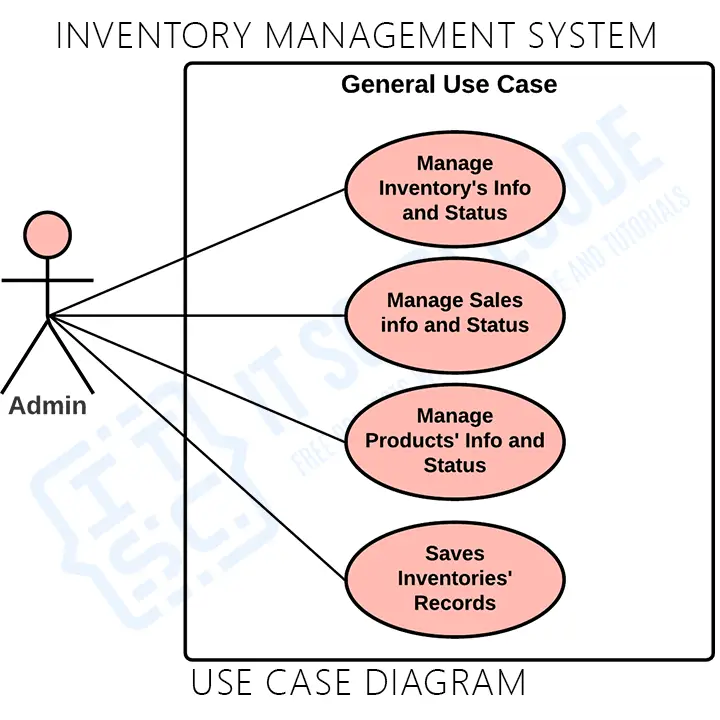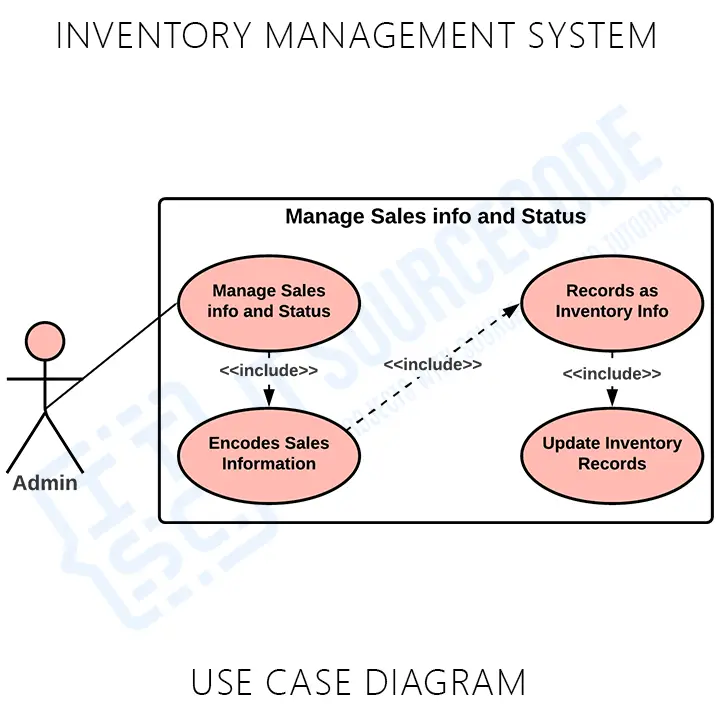This inventory management system use case diagram shows how the components of an inventory management system interact graphically. It reflects the process of identifying, outlining, and organizing the system requirements for the Inventory Management System. The primary participants in this use case diagram for the inventory management system are the Super Admin, System User, Supplier, and Anonymous Users.
They carry out various types of use cases, including Manage Inventory, Manage Customers, Manage Purchasing, Manage Receiving Stock, Manage Payment, Manage Supplier, Manage Suppliers, Manage Users, and Full Inventory Management System Operations.
Read the following articles to learn more about diagrams and other topics.
- Inventory Management System UML Diagrams
- Inventory Management System Activity Diagram
- Inventory Management System Class Diagram
- Inventory Management System Sequence Diagram
- Deployment Diagram for Inventory Management System
- Component Diagram for Inventory Management System
- Pharmacy Management System Use Case Diagram
Project Overview
| Name: | Inventory Management Use Case Diagram |
| Users: | Sales and Inventory Crews |
| Tools Used: | Any Diagram tools that provide use case diagram symbols. |
| Designer: | ITSourceCode.com |
What is a Use Case Diagram
The use case diagram for inventory management system shows the sample behavior of the software. It includes the project functions using use cases, actors, and their connections.
Moreover, the diagram assists you to define and organize project needs. This also provides a clear picture of the user and system relationships. Therefore, this diagram depicts the complex function of a system including how the user reacts to it.
Importance of UML Use Case Diagram
Helping the developers and businesses with system management is one of the importance of the UML use case diagram. It includes the procedures from the viewpoint of users.
Furthermore, the diagram serves as the system analysis to identify, clarify, and organize the project needs. This diagram works best with other UML Diagrams. It includes activity, class, sequence, deployment, and component diagrams.
Use Case Diagram Inventory Management System
The use case diagram example for inventory management system has two main illustrations. These illustrations describe the system’s general and specific processes.
Inventory Management System design: General Use Case
The general use case is the most common application of a use case diagram. The image below depicts the main components of the UML use case diagram for the Inventory Management System.

Use Case Diagram using Include and Extend
The use case diagram using include and extend is used to elaborate the proceeding diagrams.
The label “include” implies that the sub-processes are required to complete the task. Extend, on the other hand, declares otherwise.
Monitor and Manage Inventory Information and Status
This function lets the admin monitor the purchases or sales information and the company’s inventories.

Manage Sales Info and Status Use Case
This is the process where the admin manages every transaction done by the customer/client. The data records are the reference for future use.

Manage Product Information and Status
This process explains how the admin or users handles the product’s information and their stocks. It is used to determine the type of customer transaction and its other details.

Manage Product Information and Status Use Case Diagram
You can add more to this illustration and it is up to you how will you create your diagram. But make sure to have precise information and consider the included use cases.
Use Case Diagram for Inventory Management System Pdf
How to draw a Use Case Diagram?
Time needed: 2 minutes
Here’s the complete guide on how to draw a use case diagram for inventory management system.
- Step 1: Familiarize Use Case Diagram Symbols
For beginners, you need to familiarize first with use case symbols to be used.
- Step 2: Determine the system processes
The next step is to determine the system’s processes. They will be the use cases of your project.
You may ask the users about the typical activities done in inventory management. - Step 3: Analyze the use cases included
The gathered information from the users needs to be evaluated to know the general use cases.
From the general use cases, you will see the sub-cases that are included. But, only include the useful processes related to the inventory management system. - Step 4: Plot the Use Case Diagram
To plot the diagram you will need the users, use cases, container (scope), and their indicators (association). You will base the flow of use cases on the evaluated information from the users.
Your first move is to place the users involved.
Next, put the container in the plotted diagram to separate the objects (users and system) scope.
Then place the use cases of the inventory management.
Finally, you need to map out the association of the use cases to show the interactions between the user/s and the system.
Conclusion
The UML use case diagram represents the methodology used in system development. It helps developers know the possible inputs that the project should process and perform.
Furthermore, you will discover the needed processes and connect them to the other UML Diagrams. The diagram is also applicable in modeling the software’s use cases (processes). It captures the system’s flow from one process to the next.
Inquiries
If you have concerns about the Inventory Management System Use Case Diagram, just leave us your comments below.

